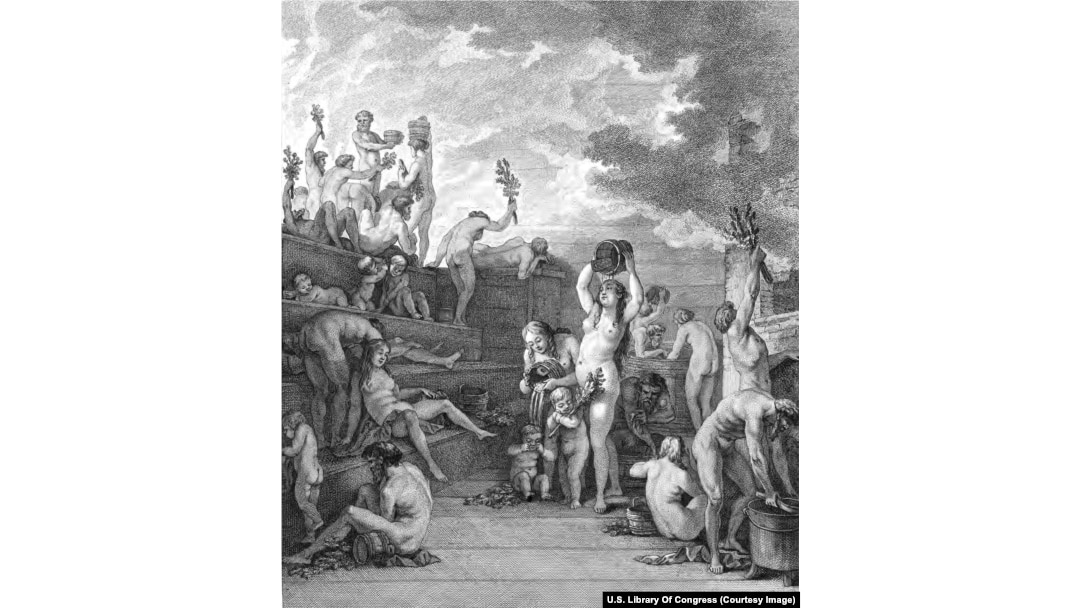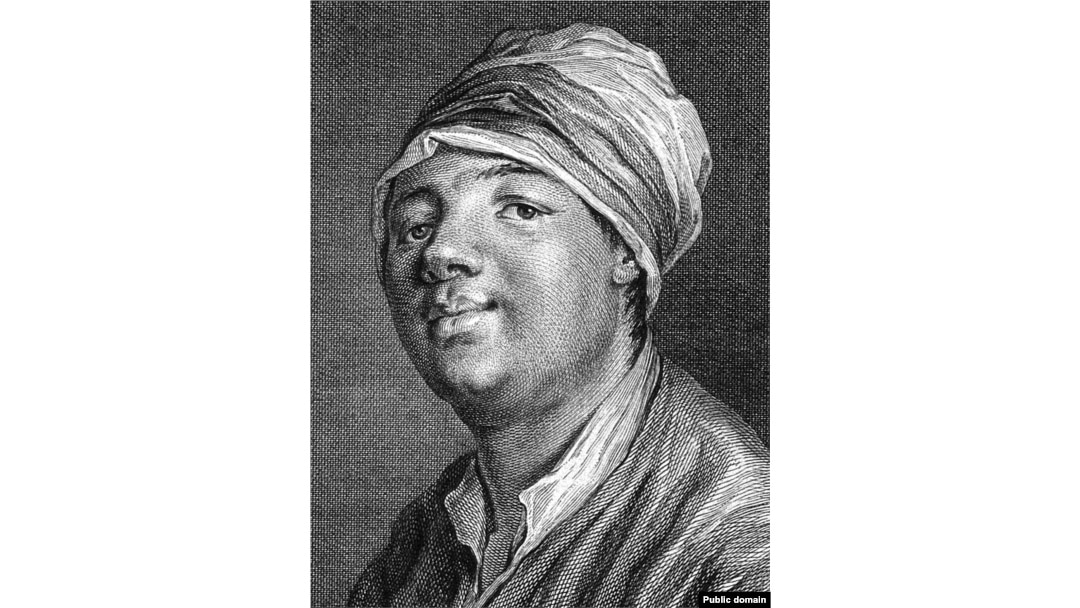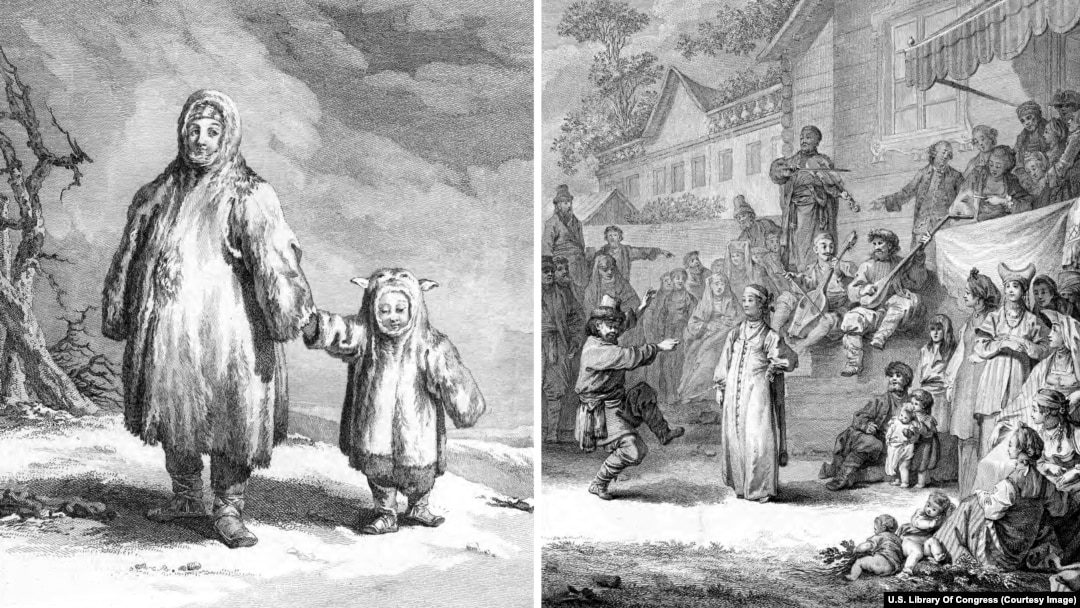The first experience of a Russian banya did not go well for Frenchman Jean-Baptiste Chappe d'Auteroche. "I thought of nothing but getting out as fast as I could," the astronomer wrote.
Panicked by the heat, d'Auteroche fled the traditional Russian steam room and returned to his lodgings half-dressed "as fast as possible," then "went to bed immediately."

A depiction of a Russian banya from Jean-Baptiste Chappe d'Auteroche’s book on his journey into Siberia in 1761.
The banya scene is one of several vivid depictions of life in Russia in 1761 from a book, titled A Journey Into Siberia. Copies of the book today sell for thousands of dollars, but an original edition has now been made publicly available in the U.S. Library of Congress.
The illustrated book offers one of the first detailed reports of the life and landscape of Russia at a time when modern science was young, and much of the world remained unknown to European audiences.
Etchings in d'Auteroch's book, which are reproduced here, were made by Jean-Baptiste Le Prince, another Frenchman who had travelled extensively in Russia, but did not join d'Auteroch on his journey to Tobolsk.

French astronomer Jean-Baptiste Chappe d'Auteroche,
D'Auteroche had been sent to Russia with the task of recording the transit of Venus past the face of the sun. The rare celestial event offered astronomers a chance to calculate the distance between the Earth and the sun, thus revealing some of the mechanics of our solar system.
With Venus due to pass in front of the sun on June 6, 1761, d'Auteroche set off from Paris in November 1760 with a letter of recommendation from the French king, Louis XV.
His destination was Tobolsk, a distant Siberian settlement where the transit of Venus would occur more quickly "than in any other part of the globe," making the site ideal for observations that could later be compared with other astronomers' findings.
A typical Russian village scene. The covered sled in the center left of the image matches the description of sleds that d'Auteroche and his companions used to travel through Russia.
En route to Tobolsk, the astronomer made detailed descriptions of the culture and cuisine that he encountered on his long and often dangerous road.
D'Auteroche's description of traditional Russian pierogi dumplings match exactly a version that is still served today.
"Piroquis are a kind of small pie, about three inches wide," he wrote. "The inside of which is filled with a fish they call Siantki."
A dance in a Russian village.
The Frenchman also noted down one of the earliest recipes for kvass, a fermented drink that today tastes something like a mix between lemonade and beer. Judging from d'Auteroche’s description, the beverage appears to have evolved significantly since the 1700s.
"Their drink is what they call quouas, which is nothing more than water made to ferment with bran and a little flour," d'Auteroche noted. "This liquor is very clear, and of a yellow color, but it's more sour than vinegar, and has a taste which those who are not used to cannot bear."
An etching apparently depicting d'Auteroch and his entrourage entering a Russian homestead.
Living quarters in Russia were described by the astronomer as being split into two parts.
"The lower floor is for the cattle, and the upper is divided into two parts," D'Auteroche wrote. "One for the milk and other provisions, the other for the family. In the last is a stove, which takes up one-quarter of the room: it is generally made of brick.”
A Russian couple in what d'Auteroche described as typical clothing.
Christian piety was described as rigid in matters such as fasting during lent and the honoring of local saints, even in the midst of "the most criminal pursuits." The astronomer cited one story he was told "by a Russian who was in love with his neighbor's wife."
After sneaking into the married woman's bedroom, the man "thought himself just on the point of being completely happy," when his amore suddenly ran to a nearby chapel to offer a prayer to the saint of the village. She then hurried back to her waiting lover "and threw herself again into his arms."
A depiction of a tsar's wedding ceremony. During d'Auteroche's trip the empire was ruled by Elizabeth of Russia.
D'Auteroche was accompanied by an interpreter and a clock technician whose expertise was essential for the precise timekeeping that would be needed for celestial observations.
Local governors also assisted with armed guards through some sections of his journey.
A landed sturgeon depicted with fishing equipment.
After five months of traveling, d'Auteroche and his entourage arrived in Tobolsk in April 1761, where they began building a hilltop observatory to track the June 6 transit of Venus.
For locals in Tobolsk, the sight of otherworldly instruments that included a "19-foot-long telescope," and the construction of the mystifying observatory sparked unease.
Whispering tongues began to blame the wizard-like foreigner for a flood that had devastated the town and tensions in the town rose as the critical date drew near.
An indigenous Siberian woman and child dressed in animal furs.
Russians that knew d'Auteroche's purpose in Tobolsk warned the Frenchman to travel only with the armed guard he had been assigned by a local ruler, and through the beginning of June he slept inside his hilltop observatory lest it should be torn down in the night by angry locals.
The morning of June 6 dawned cloudy, but as the minutes counted down towards the transit of Venus, the French team watched as the sky slowly cleared.
"The moment of the observation was now at hand," d'Auteroche recalled, "I was shivering all over, and was obliged to collect all my thoughts, in order not to miss it."
After carefully tracking the planet's movement, the Parisian soaked up the pleasure of success on the Siberian hilltop, more than 4,000 kilometers from home.
"I truly enjoyed the completion of my observation, and was delighted with the hopes of its being useful to posterity when I have quit this life," he wrote.
Indigenous Siberian women wearing shawls propped up by tree bark.
After a meandering route home during which d'Auteroche visited Yekaterinburg and Kazan, he stayed through the winter in St. Petersburg. The astronomer finally returned to France in August 1762. Soon afterward, he was tasked with another mammoth expedition, this time to observe the transit of Venus from the Baja California peninsula. He caught a fever while returning from that expedition and died in August 1769.
An obituary released by the French Academy of Sciences notes that the unimaginable hardships d'Auteroche endured in the name of science were evidence the astronomer "loved glory, but sought to earn it honestly."


